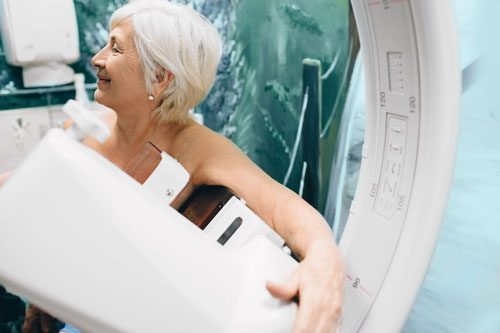If you’re a woman over 40, you likely know the ritual…
Each year or two, you go off to the gynecologist to get a mammogram.
It is not a pleasant experience.
During the test, your breasts are compressed between two plastic imaging plates while they are X-rayed. For some women, it’s merely uncomfortable. For others, it can be so painful that they take aspirin or ibuprofen ahead of time.
Then comes the anxious waiting. It can take up to 30 days to find out if you have any abnormalities that might be breast cancer.
This is where the real nightmare begins for many women…
About one in seven women get a false-positive result. This means their mammogram showed a spot that might be cancer.
This can be overwhelmingly stressful. They must get further testing such as a biopsy or ultrasound to make sure the abnormal findings of the mammogram are not cancer. It can take days or weeks.
Most women who regularly get mammograms face the nerve-wracking ordeal of a false-positive at least once in their lives.
A major new study has an important message for older women: You no longer have to put yourself through it.
The research comes from the Harvard School of Public Health. Researchers analyzed more than a million mammograms performed on women between the ages of 70 and 84.[1]
The scientists concluded the benefits slightly outweighed the risks for women between 70 and 74. Those risks include overdiagnosis, overtreatment, and anxiety over worrying about possibly having cancer.
But for women over 75, any benefits evaporate. By then, mammograms don’t reduce the risk of dying from breast cancer.
6 Ways to Reduce Your Risk of a False-Positive Mammogram
If you’re young enough to benefit from mammograms, you can take steps to reduce the risk of a false positive. They will help you avoid the unnecessary stress of worrying about an illness you don’t have.
- Make sure the radiologist has your past scans. The radiologist needs to compare your latest mammogram to older images. That’s how small but significant changes in the breast tissue are found. And it makes faulty readings less likely.
- Skip deodorant the day of the test. Also avoid using any lotions, powders, creams, or perfumes under your arms or on your breasts. These can leave traces that will show up on your images.[2]
- Ask
for your test to be read by more than one person. Dr. W. Phil Evans is the medical director
of the Susan G. Komen Breast Center. He encourages having two radiologists
separately interpret a mammogram. Later, they can meet to discuss any possible
abnormalities.
Dr. Evans says this method can result in fewer false positives…and a 50% increase in detections of actual cancer.[3]
- Be as still as possible while the images are taken. Radiologists enlarge the X-ray images to get a close, detailed look. So even a small amount of movement can cause blurring. Hold your breath while the X-ray is being taken.
- Leave any neck jewelry at home. Anything you wear around your neck can interfere with the X-ray machine. Unreliable images can result.
- Avoid upper body tattoos. The metal in tattoo ink can migrate to your underarm lymph nodes. It can show up in a mammogram, giving you a false positive.[4]
If you’re a woman over 75, stop torturing yourself. You no longer need mammograms.
Editor’s Note: If you’re worried about cancer, you need to read our monthly journal, Independent Healing. It’s your best source for unbiased, evidence-based medical advice. Discover The Cancer Kill Code. It’s a secret natural trigger that detonates cancer’s self-destruct button.
Related Articles
The ‘Yogurt Solution’ to Breast Cancer
Slash Your Risk for 7 Types of Cancer
Hair Dye Increases Breast Cancer Risk
Like this Article? Forward this article here or Share on Facebook.
[1]https://medicalxpress.com/news/2020-02-women-older-reap-death-benefit.html
[2]https://www.hackensackmeridianhealth.org/HealthU/2018/09/14/14-tips-to-prepare-for-your-mammogram/
[3]https://www.cancernetwork.com/articles/ways-avoid-false-positive-screening-mammograms
[4] https://www.diagnosticimaging.com/articles/tattoo-ink-masquerades-lesions

